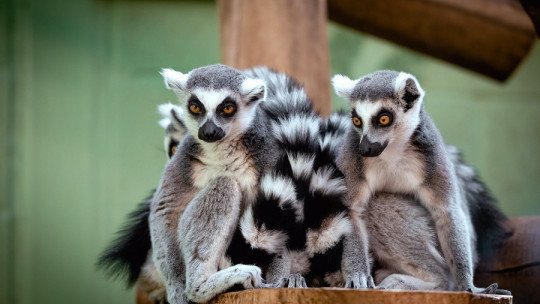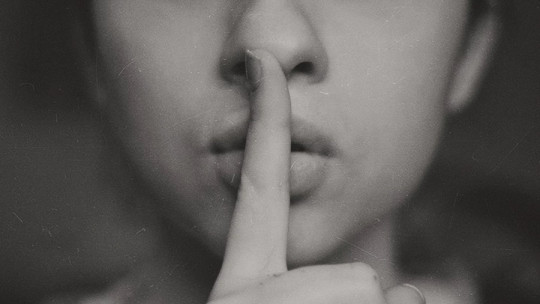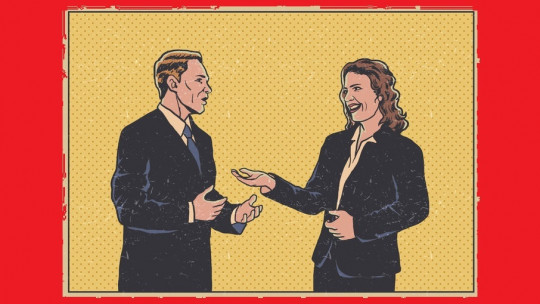Facial expressions such as laughing, crying, and smiling could have a common origin.
Long before the appearance of language in the human species, non-verbal communication already existed. Thanks to gestures we are able to communicate: we smile, we cry, we shrug our shoulders, we raise our eyebrows… These behaviors are common and innate but they are also symbolic, that is, they represent and communicate feelings and thoughts.
Although some of them, if we think about it carefully, are quite strange: Why do we show our teeth to express kindness? Why do we run salt water out of our eyes to ask others for comfort? Why do we laugh to convey that something is funny to us?
In the field of anthropology, it is widely recognized the importance of the face in interaction and social intelligence We ourselves are able to infer feelings and communicate thanks to facial expressions.
Although we currently know the adaptive functions of other types of human behaviors, such as emotions; They are our way of reacting to psychological pain or pleasure. The adaptive function of human facial expressions remains partly unknown.
Several current hypotheses have attempted to define the evolutionary roots of smiling, laughing and crying. Recently, The theory of defensive mimicry has been proposed for its explanation , which proposes defensive reflexes as the common origin of the three behaviors. In this article we will explain in detail this recent evolutionary theory and the evolution of smiling, laughing and crying from it.
What does the Defensive Mimicry Theory say?
We have all cried from laughter at some point, or have started laughing in the middle of our own drama. Some ancient Greek philosophers and poets already realized the similarity between laughter and crying, especially as the degree and intensity of emotional expression increased. But… Why are laughter, smiles and tears so similar? This similarity could not perhaps indicate the same root.
The theory of defensive imitation proposes that some human emotional expressions originally evolved as prolonged, exaggerated imitations of our own defensive reflexes
When we face situations that are potentially threatening to our life or physical integrity, our body responds immediately and automatically, shortening our muscles. For example, in the startle reflex, muscle groups involving the neck and back contract.
These defensive reflexes produce a change in posture or body expression, and, therefore, They transmit information about the internal state of the person This information can be used by certain threatening animals. But suppressing reflexes is not an option, since these are necessary for survival, for example, contracting the leg muscles makes escape easier.
However, this knowledge of the internal state and apparent helplessness can be beneficial for the animal itself. If animals are aware that others can interpret their reactions, they can consciously imitate them

For example, an animal may simulate a fear reflex, with its characteristic muscular expression, to manipulate the behavior of those around it. The surrounding animal may interpret fear as a sign of vulnerability and attack. In reality, this behavior was what the first one was looking for, reversing the roles of victim and executioner. So, by developing imitated defensive actions, the animals could have learned to manipulate the behavior of others.
According to the theory of defensive mimicry, these defensive reflexes could be in the origin of the social and symbolic expressions that we know such as smiling, laughing and crying This can adequately explain the physical formation of a wide range of emotional expressions, but not all.
Study of defensive reflexes
A group of researchers realized that many human emotional expressions also looked remarkably similar to another area of behavior; reflective behaviors in primates. For several years they studied a set of reflexes responsible for protecting different parts of the body, especially focusing on the startle reflex, as well as other blocking and withdrawal reflexes.
These reflexes and their actions usually last less than a second, but they can be studied thanks to video recording and measurement of the muscle activity they involve. When they examined them in detail, they observed that they resembled the set of muscular actions involved in smiling, laughing and crying.
At that time they established the premise of whether these reflexes or defensive actions could have been at the origin of emotional expressions in humans, sowing the germ of the theory of mimicry or defensive imitation.
The first scientist to study the human startle reaction systematically was Lévi-Strauss, at the beginning of the 20th century, with the help of a film camera. For his study he used a rather unethical procedure; He fired a gun behind the heads of psychiatric patients whom he had not informed.
He observed, across the recordings, a consistent set of movements within the first hundredths of a second; each component was apparently useful in protecting a part of the body Regarding the torso, the contraction of the muscles of the eyelids and faces to protect the eyes, the inclination of the head down and forward to hide the teeth and face, the contraction of the shoulders to protect the neck. Finally, the curvature of the torso causes the body to shorten, making it smaller and, therefore, more difficult to reach. These “protective” movements occurred in different areas of the body.
Later studies showed that the degree of the reflex response varies greatly depending on the situation and the person. Someone who is very calm may have a very reduced response that only involves slight tension of the muscles around the eyes. A person in a state of stress or anticipatory anxiety will respond more broadly, using more muscle groups. As the degree of the reflex increases, it spreads from the eyes (where it is strongest) to other parts of the face, and finally to other parts of the body.
There are two main types of reflexes that serve to defend different areas of the body these work together and represent the initial and involuntary response that protects the organism.
After the initial reflection, there is a set of slower and more complex reactions that are also reflective. This second phase involves a series of neurons called peripersonal. These neurons already take into account the place from which the threatening stimulus originates; if it comes from the left, the corresponding eyelid will close faster.
Evolution of emotional expressions
There are diverse opinions about how signals evolve in animals. Information-based theories postulate that signals evolve to transfer information from one animal to another about the environment. Non-informational theories explain that signals evolve because they have a direct effect on the behavior of others.
Smile Evolution
Regarding the evolution of the smile, it is striking how Baring teeth, an obvious sign of threat, has managed to become a sign of non-aggression However, it appears that tooth exposure as a threat and as a signal of non-aggression are fundamentally different and do not involve the same muscles. Non-aggression (smiling) being related to defensive actions, protecting the eyes.
In this case, no attempt is made to define whether the human smile is a defensive action in itself or is an evolution of it. It is suggested that the smile appeared rather as an exaggerated imitation of that same defensive action. The animals understood that thanks to that grimace, they could influence the behavior of others and avoid aggression. More than an evolution, it would be a conscious appropriation.
If we think about it, in the present we often use this “protective” smile. For example, when we make a mistake driving that involves another person, we often smile in a forced way, as an apology and to avoid getting angry.
Evolution of laughter
Could laughter be explained by an evolutionary process similar to that of smiling, imitating defensive reflexes? Laughter appears to be a strong, exaggerated and extended imitation of a defensive reaction. Even the tears, which it sometimes produces, would be a reflexive response to protect the eyes, according to the defensive mimicry hypothesis.
The debate about which animals are capable of laughing is still open; this characteristic was believed to be exclusive to some apes and humans. A recent study concluded that smiling is widespread among animals; Cows, dogs, foxes and some birds, such as magpies, exhibit this behavior, in addition to primates. Ethologists have described a gesture, common among many mammals, called an open-mouth play face.
Laughter could, then, have evolved from play Let’s say two animals play fighting. A blow near the nose, with its subsequent tears, would be a sign that a limit is being crossed and would end the game. Laughter also modulates the response, if it is soft, the game continues, if it intensifies the game comes to an end. An example would be laughter caused by tickling.
But, human beings laugh in different contexts, outside of pretend fights and tickling. Although it seems that laughter would fulfill the same function, it would be a reinforcement of a behavior. In the case of comedy, laughter serves as reinforcement to modulate the comedian’s behavior.
Evolution of crying
Crying, unlike laughter, is apparently exclusive to humans, making comparative studies with other animals difficult. Animals make sounds to ask for help. Human crying would be a signal to seek the comfort of others
For the evolutionary explanation of crying, based on defensive reflexes, tears would have to be forgotten at first; Crying is not only the liquid that comes out of our eyes. Crying is accompanied by a series of muscular movements that are greatly reminiscent of the defensive action that seeks to protect the eyes, already described by Strauss.
But why is consolation sought by imitating the reflexes that normally trigger a strong blow to the face. Behind the cases of consolation that occurred in primates there is an initial aggression or fight. Therefore, it is adaptive to have a mechanism to comfort the victim afterwards and repair the friendship.
Crying would not in itself be an action of facial protection, but an imitation of the set of defensive actions who seek the same consolation that was offered, among apes, after the aggression.









